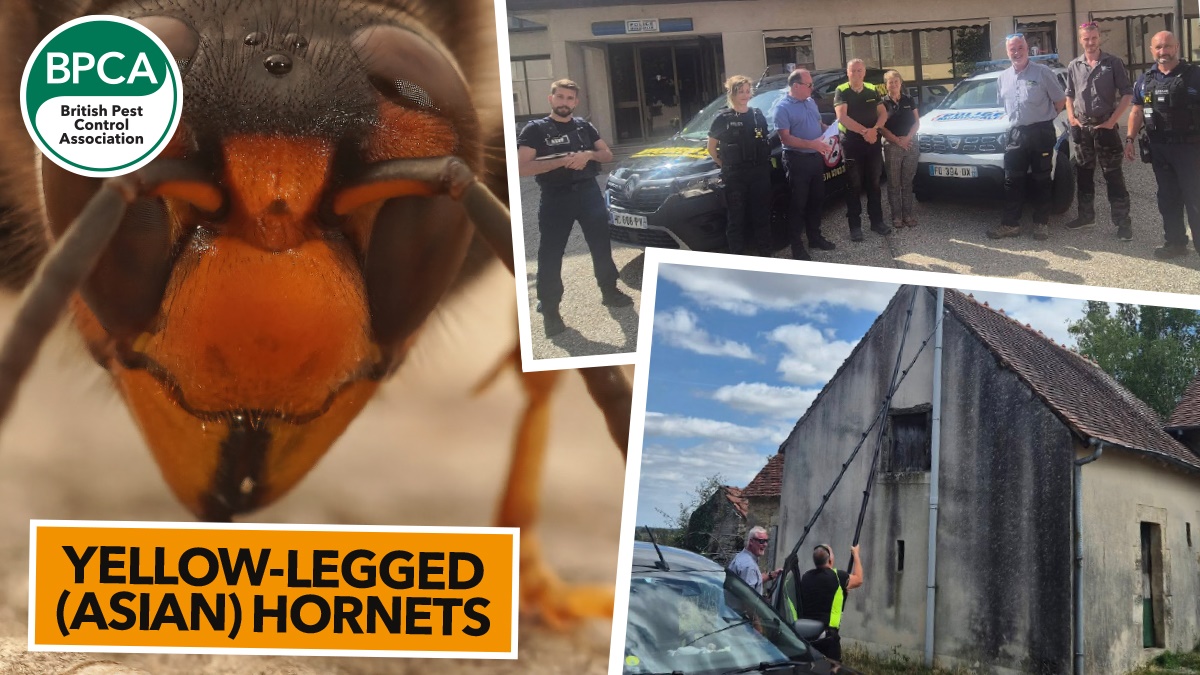PPC120 | OPINION
Christopher Venables of Venables Pest Control shares first-hand insights from France on the invasive Asian hornet - its spread, behaviour, control methods, and why stronger UK collaboration is vital.

This year, curiosity finally got the better of me. Alongside Mick Nicholls from Pesky’s Pest Control, I crossed the Channel to see first-hand the invasive menace that’s been making headlines: the Asian hornet.
This non-native predator has built quite a reputation for aggression and environmental impact, and I wanted to know whether the hype matched reality.
Our host was Robert Moon of Applicateur 3D, who kindly invited us to see his work in France.
The Asian hornet’s spread has been steady and relentless - moving from France, to Jersey, and now reaching the east coast of England. I even found one dead in Cirencester on 7 August 2025, proof that this pest is already knocking at Britain’s door.
From the moment we arrived, Robert wasted no time. On our very first day, we tackled nests tucked into trees, clinging to the sides of buildings, and hidden beneath rooflines - locations all too familiar to anyone who’s dealt with wasps or European hornets.
Treatment methods were similar too, and I braced myself for the kind of furious retaliation I’d heard so much about. It never came.
Yes, the hornets were defensive, but they were far less volatile than I had imagined. Wearing a protective suit was still non-negotiable, especially in lofts, sheds, or when working directly underneath a nest, but much of their aggression seemed triggered only by the actual piercing of the nest rather than our presence.
In fact, I filmed two active nests up close without provoking so much as a buzz in my direction.
While nest locations can be tricky, French pest controllers are well equipped. Fifteen-metre extension poles make quick work of high or awkward placements, and in particularly obstructed spots, Robert occasionally resorts to a paintball gun loaded with natural pyrethrum balls - a surprisingly efficient (and slightly sporting) solution.
Over two days, we treated close to a dozen nests. I was delighted to see how much recognition Robert receives from the local community for his work. And the threat is taken seriously enough that even the municipal police are involved.
Nests are reported to the police, confirmed visually, and then passed directly to certified technicians for treatment. Robert alone has treated nearly 60 nests this season, with an average of 300 in his area each year. The public’s vigilance, combined with official cooperation, makes their response both swift and systematic.
I also had the privilege to speak with Senior Scientific Officer Alastair Christie in Jersey, and learned that the approach is much the same, with locals actively trapping hornets and alerting his team, who then track and treat nests.
Treatment techniques are identical, but the island’s high public awareness and smaller size mean they work with exceptional efficiency. GPS tracking is being explored to speed up nest location – a potential game-changer that could save time and boost the number of nests eliminated each season.
The UK, meanwhile, has been concentrating efforts in Kent and Sussex, primarily through the BBKA and NBU. But in my view, if we truly want to get ahead of this problem, the Department for Environment, Food and Rural Affairs (Defra) must work more closely with the pest control industry.
We already have the skills, equipment, and experience - no extra training required. With collaboration, GPS, and a nationwide volunteer network feeding sightings to technicians, nests could be treated almost immediately across the country.
By the end of our visit, Mick and I left France with more than just new knowledge. We’d shed much of the stigma surrounding Asian hornets, learned practical strategies for control, and seen first-hand how community engagement, police involvement, and the right tools can make a measurable difference.
A huge thank you to Robert Moon for his hospitality, expertise, and generosity in sharing his methods. I’d recommend any pest controller spend time on the ground with this species - it’s eye-opening, highly educational, and, in our case, worth an extra 10 CPD points.
DOWNLOAD MSD
What do you think about the threat of Asian hornets to the UK? Send us your opinion and you could get published in the next issue of PPC magazine.
hello@bpca.org.uk

Source: PPC120